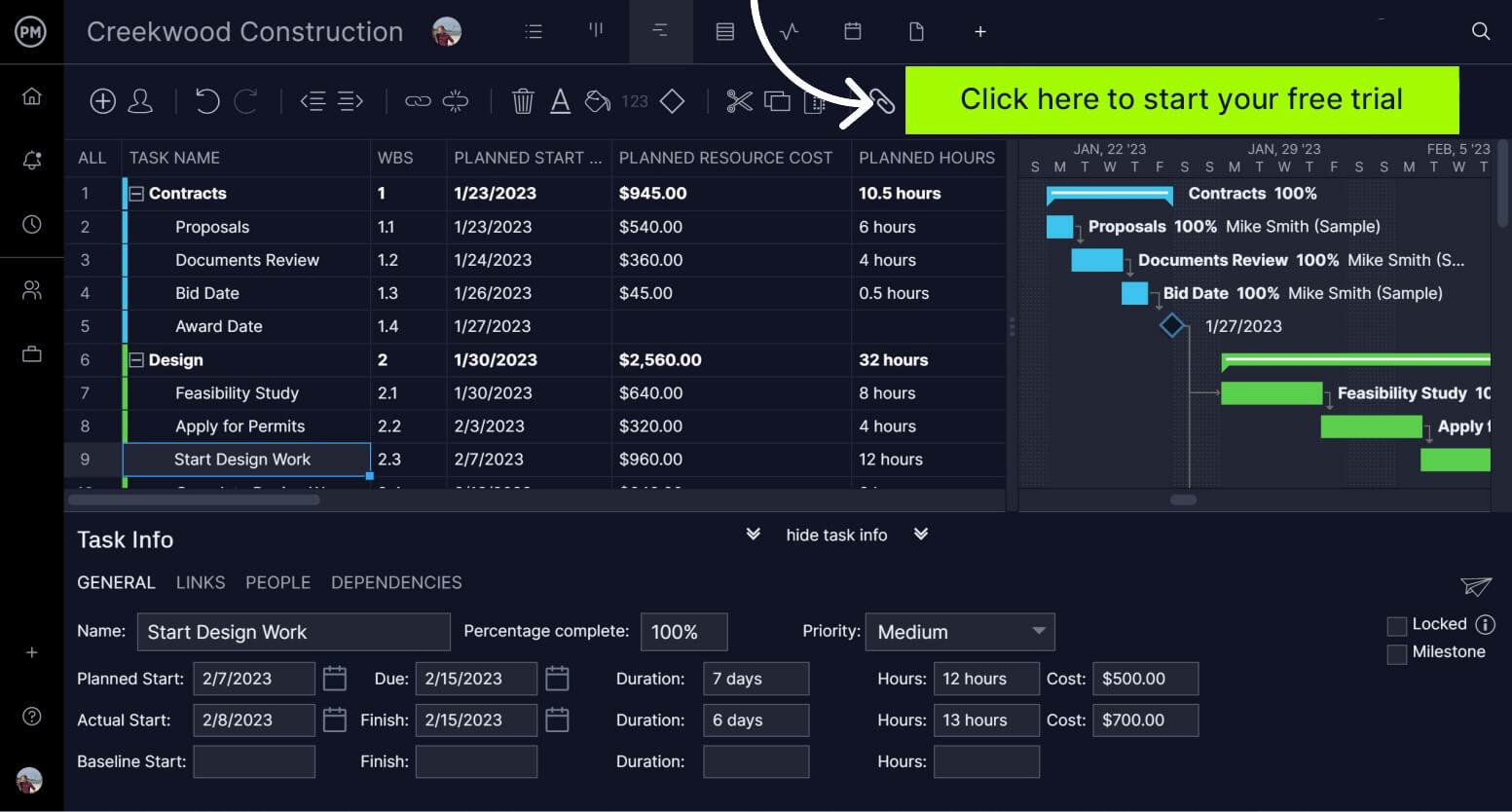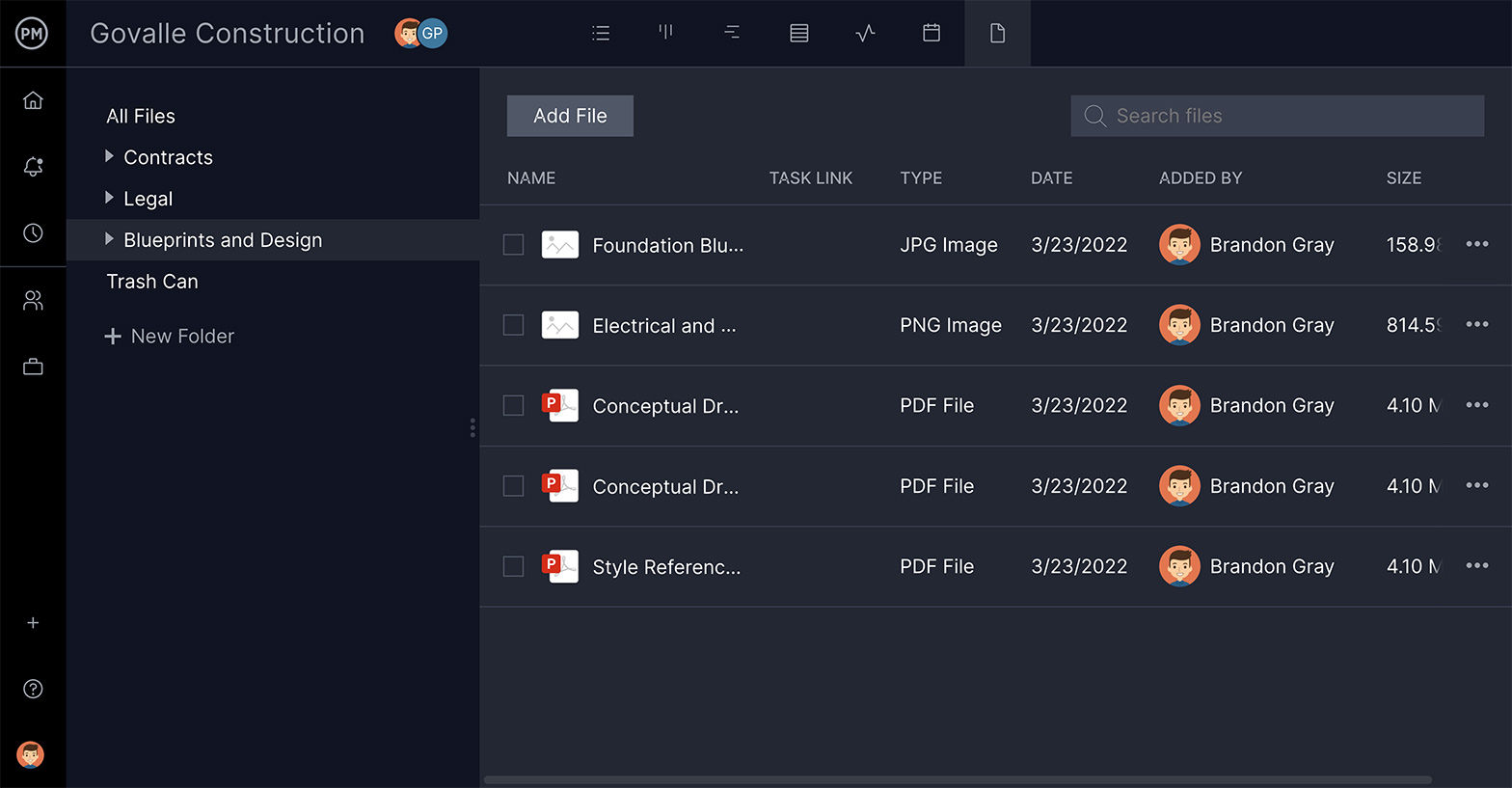Every project, regardless of the industry, uses a methodology to estimate time and cost to better plan projects. In the life sciences, engineering and construction industries, the method often used is called parametric estimating.
When dealing with a project that has many variables and stages, such as construction, it can be difficult to get an accurate estimation of how long the project will take and what sort of financial investment is required to deliver success. Parametric estimating is often used as it’s reliable.
What Is Parametric Estimating?
Parametric estimating is a project estimation technique to estimate cost, duration and effort on a project. It uses a set of algorithms, statistics or models to describe the project and is one of four primary methods that project managers use when estimating a project.
While usually a more accurate method, parametric estimating requires a lot of effort upfront. The method is well-established and can be found in the Project Management Institute’s Project Management Body of Knowledge (PMBOK).
It works by correlating a parameter with a cost or time value. That correlation is scaled to the size of the project; for example, if it takes one minute to hammer a shingle on a roof, it’ll take an hour to hammer in 60 shingles to the roof.
A parametric estimation requires historical data which can be many things such as old projects that are similar can be used. Market data is usually available to the public while some agencies provide statistics for benchmarking.
As common as it is to use parametric estimating, there are many ways to use it. Some use complex statistical models and perform regression analysis. It’s also possible to develop an algorithm and use it, but this is usually only done for large projects where even small miscalculations can have a big impact.
If you’re managing a smaller project, though, parametric estimating can also prove helpful. For example, you can apply the rule of three; if something didn’t occur within a situation or event, you can scale that result with 95 percent confidence that the ratio will be the same for a larger situation or event.
Once you have an accurate estimate, it informs your project plan. Project management software makes it easier to use parametric estimating to create project schedules. ProjectManager is online software that has online Gantt charts that organize tasks, set milestones and link dependencies. It tracks time, cost and resources in real time in addition to filtering for the critical path and sets a baseline. You’ll see in real time if your plan aligns with your actual effort. Get started with ProjectManager today for free.

Parametric Estimating Formula
Before we get to the formula, it’s important to know that there are two types of parametric estimating results: deterministic estimates and probabilistic estimates.
Deterministic estimates are a single number for the project resources. It’s based on parametric scaling, though it can be manually adjusted to make up for differences between the current and past projects.
Probabilistic estimates are a range that comes from the probability of different costs and durations. It’s usually based on a probability density curve with three benchmarks: most likely estimate, optimistic estimate and pessimistic estimate.
While larger projects will likely require more complicated statistical models or algorithms, smaller projects follow a more straightforward formula.
E_parametric = a_old / p_old * p_curr
In this case, E_parametric is the parametric estimate, a_old is the historic amount of cost or time, p_old is the historic value of that parameter and p_curr is the value of the parameter in your current project.
Parametric Estimating Example
To better illustrate the parametric formula, we’ll use a parametric estimating example. To keep it simple, let’s say you’re building a dog house. After researching, you’ve determined that for a dog house covering a total area of five feet, materials and labor cost $100.
The current area for the dog house you want to build is 10 feet. First divide 100 by five, which is the cost of the historic model and its total area. That gives you 20. Now you multiply 20 by the size of the current space for the dog house, which is 10. That gives you 200.
The new dog house will cost ~$200 to build which is the parametric estimate. Although we kept the example simple, projects are rarely so straightforward. It will take more research to determine the various historical data you’ll need to have an accurate estimate.
Related: Free Estimate Template for Excel
Parametric Estimating vs. Analogous Estimating
As we’ve defined above, parametric estimating is a technique that uses algorithms to calculate cost or duration with the help of historical data and project parameters. There are many different types of estimating methods and many of them incorporate historical data.
For example, analogous estimating is also used to forecast the duration or cost of an activity or project by the use of historical data from like-minded projects of the past. It also uses parameters from previous, similar projects to estimate a future project.
Even though both are based on historical data, analogous estimating is considered a top-down approach and therefore less accurate than parametric estimating. While parametric is more accurate when comparing projects or activities that are similar and can be scaled, it requires more effort upfront.
Advantages of Parametric Estimating
Parametric estimating has clear benefits, but let’s take a moment to explore those advantages more closely.
Accuracy
Accuracy is likely the most important benefit when talking about an estimating technique. This is done by referencing years of historical data to improve the accuracy of parametric estimating. The more data you have, the better your estimate.
Flexibility
The parametric estimating technique is also flexible. Once a model has been established, you can reuse it for similar projects. As noted, the more you use it, the more accurate your estimation is. It’s truly a gift that keeps on giving from one project to the next.
Usefulness
Naturally, parametric estimating is useful, but that usefulness extends beyond accurate and flexible estimations of duration and cost. Parametric estimating is useful for stakeholders, team members and customers who are all more likely to be on board with your estimates knowing that it rests on past evidence. By seeing how past projects evolved, these parties can expect similar results from the current ones.
Disadvantages of Parametric Estimating
Parametric estimating isn’t without its critics. Let’s take a look at a few of the disadvantages of using parametric estimating.
Relies on Data Quality
Quality data is essential to project success. If you’re unable to gather good data, then the parametric estimating technique can’t work its magic because it’s a data-driven estimation. Without any historical data on which to build your parametric estimating, it’s not going to be useful.
Ignores Certain Types of Tasks
Parametric estimating isn’t good for every project. For example, if you’re working on a project that delivers intangible outputs such as coding, parametric estimating isn’t going to work. Each line of code requires different amounts of thought and creativity.
Time-Consuming
We’ve mentioned this above, but it’s important to note that using parametric estimating will take a lot of work and effort, even money, during the planning stage. It might not be worthwhile if you’re not managing a large, complicated project.
ProjectManager & Parametric Estimating
ProjectManager is project management software that delivers real-time data so you can track your progress and make sure you’re meeting the estimated schedule. Once you’ve built your project plan on the most accurate parameter estimating possible, you still have to monitor that progress to ensure you stay on track. We have the features to monitor and track your progress and performance as it happens.
Track Costs, Time & Tasks with Project Dashboards
Parametric estimating is all about accurate measurement of the project’s time, cost and effort. But once you’ve done the estimating and the planning, you aren’t going to sit idly as the project is executed. Our real-time project dashboards automatically collect live data, calculate it and display results in easy-to-read graphs and charts. Unlike with other tools, there’s no setup required. Project managers get an instant status report whenever they need it to make sure they’re on target.

Import Historical Data from CSV, MPP and Excel Files
Parametric estimating depends on historical data. Our tool has unlimited file storage and can import old projects and other documents with historic data quickly and easily. You can import CSV and Excel files, but also files from Microsoft Project, a notoriously difficult software that’s expensive and complicated. Access to all the data you need in the tool makes it both easier to plan and manage your project.

Our collaborative platform connects everyone in the project, no matter if they’re in different departments or even outside vendors. This means your teams can comment on tasks and share files while managers get transparency into their work. Stakeholders can be managed and quickly updated. Better collaboration means that your project is more productive.
ProjectManager is award-winning software that helps track time, cost and resources in real time. Get dashboards for a high-level view, reports for a deeper dive and Gantt charts to set baselines and track project variance. See why teams at companies as varied as NASA, Siemens and Nestle are using our software to drive success. Get started with ProjectManager today for free.


